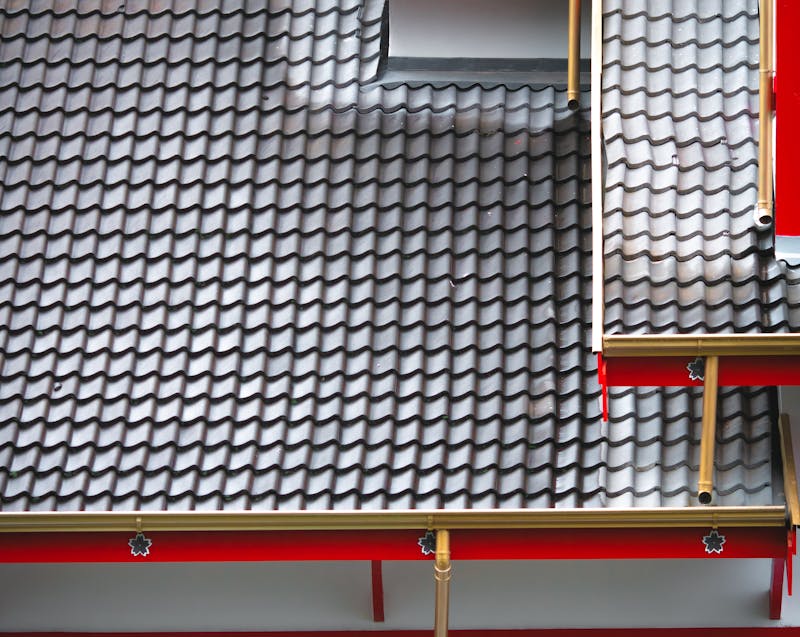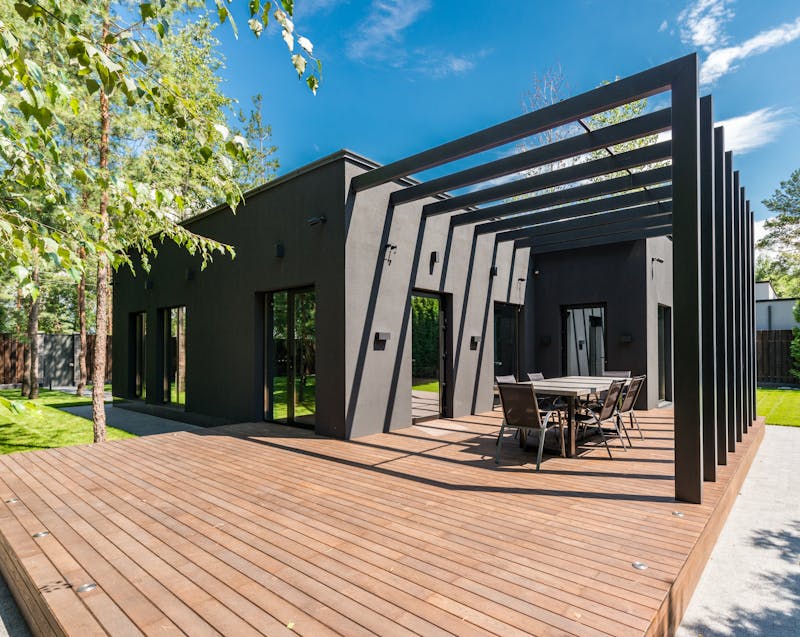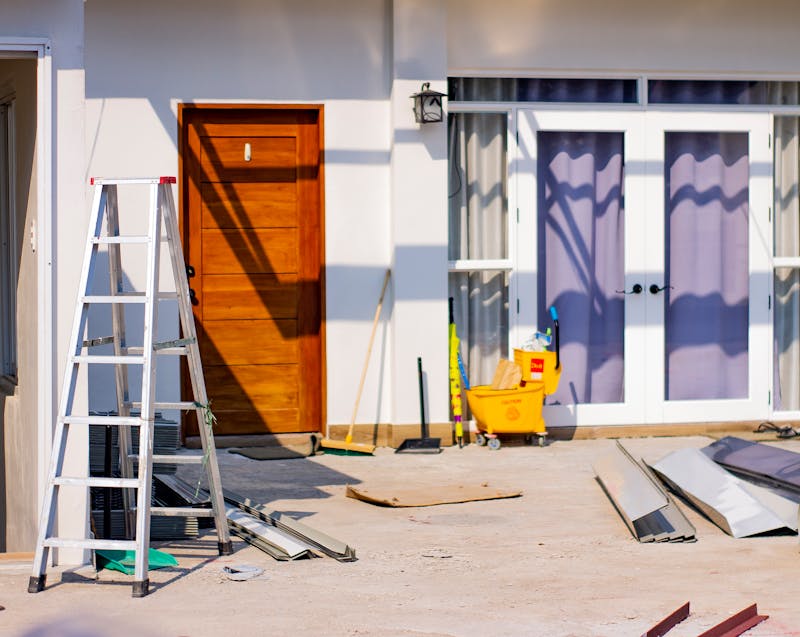Homeowners today are increasingly searching for ways to make their houses both stylish and sustainable. One of the best opportunities lies in exterior renovation, where eco-friendly choices not only improve curb appeal but also reduce environmental impact and save money over time. From energy-efficient materials to renewable energy integration, eco-conscious exterior upgrades are reshaping what it means to own a modern home. By focusing on environmentally responsible design, you can create an exterior that balances aesthetics, durability, and sustainability.
In this article, we’ll explore eco-friendly modern home exterior renovation tips that can help homeowners build greener, more efficient living spaces without compromising on style.
Why Choose Eco-Friendly Exterior Renovations?
Renovating the exterior of your home is more than just a cosmetic update—it’s an investment in long-term sustainability. Many homeowners still wonder, Is going green worth the effort? The answer is yes, for multiple reasons. Eco-friendly exterior renovations reduce waste, lower utility bills, and add significant value to your home.
Some key benefits include:
- Energy savings: Proper insulation, roofing, and window systems cut down heating and cooling costs.
- Reduced carbon footprint: Sustainable materials and renewable energy sources lower emissions.
- Healthier living environment: Non-toxic paints and finishes improve air quality.
- Increased property value: Eco-conscious upgrades attract buyers willing to pay more.
By prioritizing green design choices, you contribute to both environmental conservation and financial resilience.
How to Plan an Eco-Friendly Modern Home Exterior Renovation
Before diving into materials and design, it’s crucial to plan strategically. Eco-friendly renovations require more than choosing sustainable products—they involve creating a vision that balances budget, design, and environmental goals.
Steps to plan effectively:
- Assess your current exterior: Look at your siding, roofing, driveway, landscaping, and insulation. Identify what needs repair versus full replacement.
- Set eco-friendly goals: Is your main priority energy efficiency, sustainability, or aesthetics?
- Research local regulations: Some communities have building codes or incentives for green renovations.
- Hire eco-conscious contractors: Choose professionals experienced in sustainable construction.
- Budget realistically: While some eco-friendly solutions cost more upfront, they often provide long-term savings.
A solid plan ensures that every upgrade contributes to your greener vision without unnecessary costs.
Sustainable Roofing Choices for a Modern Exterior

Roofing plays a vital role in sustainability and energy efficiency. Traditional asphalt shingles are durable but energy-intensive to produce and often non-recyclable. Homeowners now have greener roofing alternatives that last longer and reduce environmental impact.
Eco-friendly roofing options:
- Cool roofs: Designed to reflect sunlight and absorb less heat, lowering cooling costs.
- Metal roofing: Made from recycled materials, durable, and 100% recyclable.
- Clay or concrete tiles: Long-lasting and excellent for heat regulation.
- Green roofs: Living vegetation roofs that improve insulation and air quality.
- Solar shingles: Function like traditional shingles while generating renewable energy.
By choosing the right roofing material, you can boost your home’s efficiency and contribute to a cleaner environment.
Energy-Efficient Windows and Doors
One of the biggest sources of energy loss in homes is through outdated windows and doors. Upgrading these features during an exterior renovation can drastically improve energy efficiency.
What to look for:
- Double or triple glazing: Improves insulation and reduces heat transfer.
- Low-E glass: Coated to reflect heat while allowing natural light.
- Energy Star-certified frames: Ensure compliance with high efficiency standards.
- Sustainable materials: Wooden frames from responsibly sourced timber or recycled aluminum.
Sealing gaps and ensuring proper installation are equally important, as even the most advanced window won’t perform well if improperly fitted.
Eco-Friendly Modern Home Exterior Renovation: Sustainable Siding Options
Siding determines much of your home’s appearance and insulation. Traditional vinyl siding is popular but not environmentally friendly due to its plastic composition. Luckily, there are eco-friendly siding materials that provide durability and aesthetics.
Top sustainable siding choices:
- Fiber cement siding: Made from sand, cement, and cellulose, it is durable and low-maintenance.
- Reclaimed wood siding: Provides a rustic, warm look while reducing material waste.
- Engineered wood siding: Uses sustainable fibers and less raw timber.
- Recycled metal siding: Both stylish and long-lasting, with high recyclability.
- Brick and stone veneers: Natural materials that withstand weathering and require minimal upkeep.
These siding choices not only improve insulation but also contribute to a modern, eco-conscious design.
Landscaping with Sustainability in Mind
Exterior renovations aren’t limited to walls and roofs—landscaping plays a key role in green design. A sustainable yard can enhance curb appeal while reducing water usage and supporting biodiversity.
Eco-friendly landscaping ideas:
- Native plants: Require less water and thrive in local climates.
- Xeriscaping: A drought-resistant design that minimizes irrigation.
- Rain gardens: Capture and filter stormwater naturally.
- Composting areas: Reduce waste while enriching soil.
- Permeable pavers: Allow rainwater to soak into the ground, reducing runoff.
A well-designed eco-friendly landscape reduces maintenance, saves resources, and makes your home more environmentally harmonious.
Green Driveways and Walkways
Driveways and walkways are often overlooked during renovations, but they present opportunities to incorporate eco-friendly materials. Traditional concrete traps heat and creates stormwater runoff, but sustainable options offer durability and eco-benefits.
Options to consider:
- Permeable concrete or pavers: Let rainwater seep through instead of creating runoff.
- Recycled materials: Crushed glass, reclaimed bricks, or rubber composites.
- Gravel driveways: A low-cost, eco-friendly solution.
- Grass pavers: Interlock with vegetation, blending greenery with strength.
Eco-friendly driveways balance functionality and environmental responsibility while modernizing your exterior.
Exterior Paints and Finishes That Are Safe for the Environment
When upgrading your home’s exterior look, paint and finishes play a big role. However, traditional paints often release volatile organic compounds (VOCs) that pollute the air.
Eco-friendly alternatives include:
- Low-VOC or zero-VOC paints: Minimize harmful emissions.
- Natural paints: Made from clay, chalk, or plant-based oils.
- Recycled paints: Reduce waste by reusing excess paint from other projects.
Choosing safe finishes not only improves air quality but also contributes to a healthier environment for your family.
Renewable Energy Integration for Modern Homes
A modern, eco-friendly home often incorporates renewable energy solutions into its exterior design. Adding solar panels, solar shingles, or small wind turbines can make your home more energy-independent.
Benefits of solar and renewable installations:
- Lower utility bills.
- Tax credits and government incentives.
- Increased property value.
- Reduced dependence on fossil fuels.
While the upfront investment may seem high, the long-term returns make renewable energy one of the most impactful eco-friendly renovation choices.
Outdoor Lighting with Energy Efficiency
Exterior lighting enhances security and aesthetics, but it can also waste a lot of energy if not designed properly. Switching to efficient lighting solutions helps lower energy use while creating a modern ambiance.
Sustainable lighting tips:
- LED lights: Use less energy and last longer.
- Solar-powered lamps: Charge during the day and illuminate at night.
- Smart lighting systems: Automate usage and reduce unnecessary consumption.
- Directional lighting: Avoid light pollution by focusing beams downward.
Eco-friendly lighting improves both aesthetics and energy conservation.
Water-Saving Features for the Exterior
Reducing water waste is a vital part of an eco-friendly home. Exterior renovations can include water-saving systems that conserve resources while supporting landscaping.
Options include:
- Rainwater harvesting systems: Collect and reuse rainwater for irrigation.
- Drip irrigation systems: Deliver water directly to plant roots.
- Smart irrigation controllers: Adjust watering schedules based on weather.
- Gray water systems: Recycle household water for outdoor use.
These systems not only save water but also reduce utility costs over time.
The Cost of Eco-Friendly Renovations: Investment or Expense?
Some homeowners hesitate to pursue green upgrades due to perceived high costs. While certain eco-friendly solutions require a larger upfront investment, the long-term benefits outweigh the expense.
Cost-saving factors:
- Lower utility bills.
- Longer material lifespans (metal roofing, fiber cement siding).
- Fewer maintenance requirements.
- Increased resale value due to green certifications.
Think of eco-friendly renovations as investments that pay back over years of energy savings and added home value.
Choosing Sustainable Outdoor Furniture and Décor

Eco-friendly exterior renovation does not stop with structural upgrades; the furniture and décor you select for your outdoor spaces also play a vital role in creating a greener home. Many conventional outdoor furnishings are made from plastics or chemically treated woods that are harmful to the environment. By choosing sustainable alternatives, you can enjoy stylish comfort while reducing your ecological footprint.
Eco-friendly outdoor furniture ideas:
- Reclaimed wood furniture: Durable, rustic, and minimizes deforestation.
- Bamboo or rattan pieces: Renewable, lightweight, and versatile.
- Recycled plastic furniture: Keeps waste out of landfills while resisting weather damage.
- Metal options with eco-friendly coatings: Long-lasting and recyclable.
- Natural fabric cushions: Organic cotton, hemp, or linen covers with non-toxic dyes.
Incorporating sustainable décor, such as clay planters, solar lanterns, or handmade crafts from local artisans, not only enhances outdoor beauty but also supports eco-conscious living.
Common Mistakes to Avoid in Eco-Friendly Exterior Renovations
While going green is beneficial, certain missteps can limit results.
Mistakes to watch out for:
- Choosing materials without checking certifications.
- Prioritizing aesthetics over efficiency.
- Ignoring local climate in material selection.
- Overlooking proper installation.
- Not budgeting for maintenance.
Avoiding these pitfalls ensures your eco-friendly renovation delivers both beauty and sustainability.
Final Thoughts: Building a Greener Future Through Renovation
Eco-friendly modern home exterior renovation is more than a trend—it’s a long-term approach to creating sustainable, energy-efficient, and attractive homes. From roofing to landscaping, every decision you make contributes to a greener lifestyle.
By adopting eco-conscious strategies, you’ll not only reduce your home’s environmental footprint but also enjoy practical benefits like lower costs, higher resale value, and improved comfort.
Switching to eco-friendly renovations ensures that your home remains both modern and future-ready.
